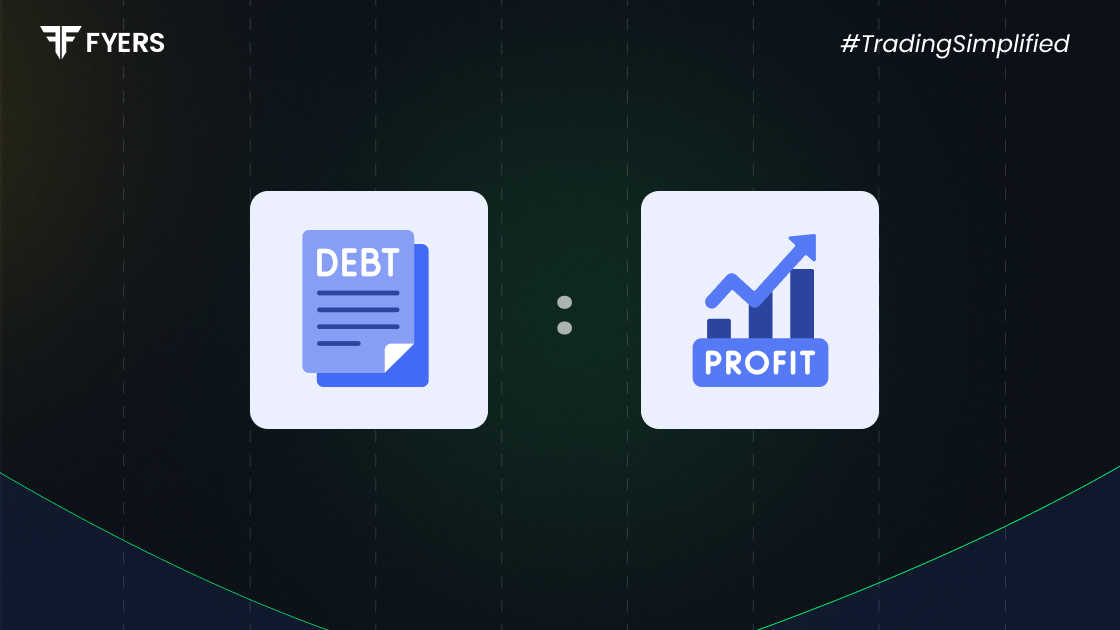

 23 Jul, 2025
23 Jul, 2025
 4 mins read
4 mins read

In the first quarter of FY2025, India Inc’s interest coverage ratio (ICR) touched a 12-quarter high, a development that signals improved debt-servicing capacity across industries. This upward trend not only reflects stronger corporate earnings but also paints a clearer picture of India’s evolving credit landscape. But what exactly is the interest coverage ratio, and why does it matter for investors, lenders, and policymakers?
The interest coverage ratio is a financial metric that measures a company's ability to meet its interest obligations using its earnings before interest and taxes (EBIT). Simply put, it tells us how comfortably a business can service its debt. The higher the ratio, the better the company's financial cushion to repay interest expenses.
In banking and investment analysis, the ICR ratio is considered a key indicator of a company’s financial health, especially during periods of rising interest rates or economic uncertainty.
The interest coverage ratio formula is:
Interest Coverage Ratio (ICR) = EBIT ÷ Interest Expenses
Let’s say a company has an EBIT of ₹100 crore and pays ₹20 crore as interest on its loans. Its ICR would be:
ICR = 100 ÷ 20 = 5
This means the company earns five times more than its interest obligations—a strong sign of creditworthiness.
To calculate interest coverage ratio accurately, one must ensure that non-operating income and one-time charges are excluded from EBIT, and that only actual interest expenses are used, not total debt repayments.
India Inc’s improving ICR reflects a combination of rising profits, better cost control, and relatively stable borrowing costs. According to recent corporate filings and research from financial institutions, companies in sectors like automobiles, capital goods, metals, and pharmaceuticals are leading the surge in operational earnings.
At the same time, debt levels have either stabilised or reduced due to conservative borrowing during the pandemic years. Lower debt, when paired with higher earnings, naturally boosts the interest coverage ratio.
This rise in ICR also signals lower credit risk for lenders and improved credit ratings for corporates—potentially resulting in lower borrowing costs over time.
The interpretation of interest coverage ratio varies across sectors. As a rule of thumb:
ICR < 1: Risky – the company isn’t generating enough to meet interest costs.
ICR between 1.5 and 2: Weak – still vulnerable during downturns.
ICR between 2 and 4: Moderate – stable but watchful.
ICR > 4: Strong – robust debt service capacity.
However, capital-intensive sectors like infrastructure or telecom may naturally have lower ICRs due to high fixed interest costs. That’s why analysts always compare ratios within the same industry.
While ICR focuses solely on interest expenses, the fixed charge coverage ratio (FCCR) offers a broader view by including lease payments and other fixed financing obligations. It is calculated as:
FCCR = (EBIT + Fixed Charges) ÷ (Interest + Fixed Charges)
This metric is especially useful for businesses with long-term lease commitments, such as retail chains or aviation companies. A higher FCCR means the firm can comfortably handle all its fixed financial charges—not just interest payments.
Understanding both the interest coverage ratio and fixed charge coverage ratio helps stakeholders assess the full picture of a company’s financial durability.
An improving ICR ratio signals better debt sustainability and typically reflects positively on a company’s credit profile. For investors, it suggests reduced default risk and potentially higher dividends, as less income is locked into debt service. It may also support higher valuations in equity markets.
For lenders, a high ICR allows for more competitive lending terms. Banks and NBFCs often use ICR as part of their credit appraisal processes, particularly in project finance or corporate loans.
Moreover, a sustained rise in India Inc’s ICR may prompt rating agencies to revise their outlooks positively, improving access to capital markets for businesses.
India Inc’s interest coverage ratio reaching a 12-quarter high is more than a statistical milestone—it’s a reflection of resilient business fundamentals, improved profitability, and prudent financial management. As corporate India continues to deleverage and optimise capital usage, a stronger ICR bodes well for long-term economic stability and investor confidence.
Still, investors must view the ratio in context. Industry norms, cyclical performance, and hidden liabilities can all influence the quality of ICR. Therefore, while this trend is encouraging, due diligence remains essential when evaluating a company’s credit health.
The interest coverage ratio is used to assess a company's ability to pay interest on its outstanding debt using its earnings. It helps lenders and investors evaluate credit risk.
The formula is:
Interest Coverage Ratio = EBIT ÷ Interest Expenses
Identify EBIT from the income statement and divide it by the interest expenses shown in the financial notes or expense section.
While ICR focuses only on interest payments, the fixed charge coverage ratio includes all fixed financial obligations like lease payments, offering a more comprehensive view of a company’s ability to meet financial commitments.
Calculate your Net P&L after deducting all the charges like Tax, Brokerage, etc.
Find your required margin.
Calculate the average price you paid for a stock and determine your total cost.
Estimate your investment growth. Calculate potential returns on one-time investments.
Forecast your investment returns. Understand potential growth with regular contributions.